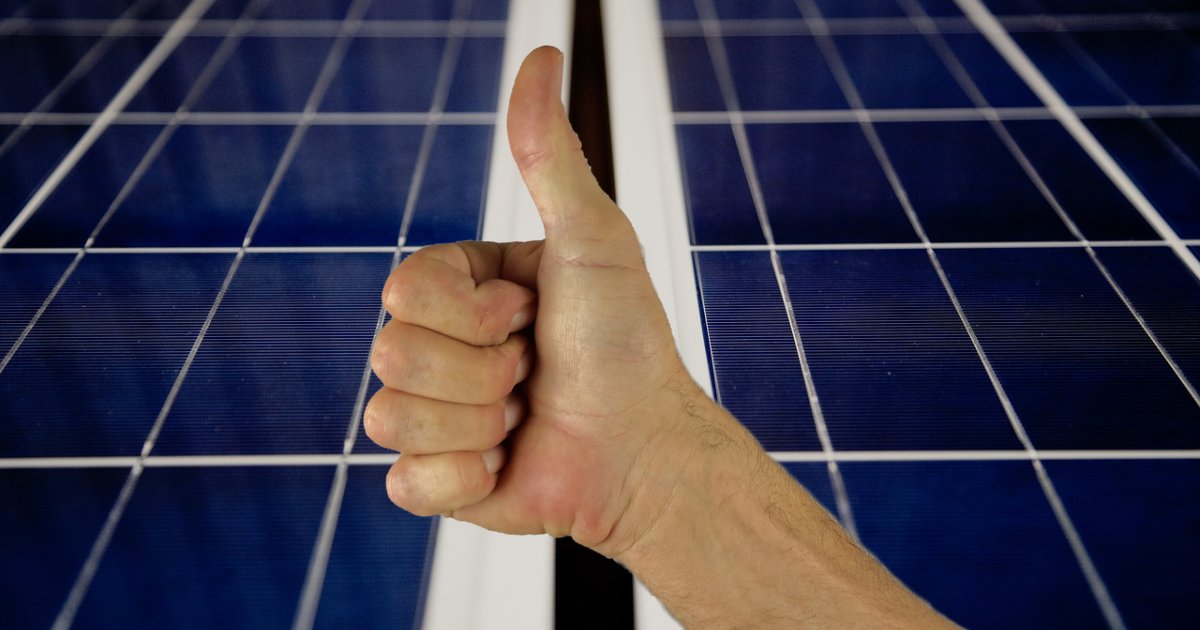The 2021 Climate Of A Nation poll found the vast majority of Australians again ranked solar power among their top three preferred energy sources. As for coal, well …
Commissioned by The Australia Institute (TAI), Climate of the Nation gauges attitudes in the community on climate change and related issues; including energy. The initiative has been running since 20071 and this year 2,626 Australians aged 18 years and older were surveyed by YouGov between August 2 and 11.
Australians’ Top Three Preferred Energy Sources
Here’s how the various energy sources stacked up:
| 2021 | 2020 | 2019 | 2018 | |
| Solar | 79% | 79% | 76% | 76% |
| Wind | 63% | 62% | 58% | 39% |
| Hydro | 37% | 39% | 39% | 38% |
| Power Storage | 31% | 29% | 29% | 35% |
| Tidal/Wave | 20% | 22% | 21% | 19% |
| Nuclear | 20% | 21% | 22% | 17% |
| Gas | 19% | 19% | 20% | 22% |
| Geothermal | 16% | 16% | 17% | 17% |
| Coal | 15% | 14% | 18% | 18% |
As noted in the past, “power storage” (such as solar batteries) isn’t really an energy source, but it can be associated with all of the other options.
While solar energy has remained firm in terms of the top three, 52% ranked it as their number one energy source this year compared to 54% last year. The report also states solar power was the most favoured energy source across gender, age, state and political leanings.
On the fossil fuel side of things, only 6% of Australians ranked coal as their number one energy source, and just 5% ranked gas at number one.
While the Federal Government has been touting a gas-fired recovery, only 12% of Australians prefer investment in gas to power Australia’s economic comeback. The majority prefer investment in renewables.
Commenting on this result, TAI Climate & Energy Program Director Richie Merzian said:
“Australians have an over-inflated view of the coal and fossil gas sector, when it comes to jobs and tax income. Yet even with this outsized view of the role of the fossil fuel industry in the Australian economy, there is extraordinarily little support for any ‘gas-fired recovery’ and increasing majority support for further renewable power investment.”
Just on the perception of coal’s contribution to the economy, the poll indicates Australians believe the coal mining industry makes up 9.8% of the total workforce – but it’s only 0.4%. Australians believe mining the problematic rock makes up 12.6% of GDP; but it accounts for just 2.5%. As for oil and gas extraction, Australians overestimated the size of gas and oil industry employment by a factor of 46.
In 2021, the popularity of nuclear power dropped for the third year in a row. On a related note, SQ’s Ronald published an article a couple of days ago on why Australia will never have nuclear power stations.
What Should Be Done With Coal-Fired Power Stations?
- 49% surveyed said they should be phased out gradually so costs can be managed over time.
- 34% were in favour phasing coal power out immediately (up from 21% in 2018), even if it meant increased costs over the short term.
- 10% believe coal doesn’t need to be replaced with other power sources such as wind and solar energy.
- 8% chose keeping coal plants running as long as possible, and dealing with the costs and impacts in the future.
With regard to the timeline for phasing out coal power, 40% said within the next 10 years and 28% in the next 10-20 years.
The full 2021 Climate Of The Nation survey report can be downloaded here.
Footnotes
- Between 2007 and 2017, the report was produced by The Climate Institute ↩


 RSS - Posts
RSS - Posts



Apparently you can convert coal power stations into thermal energy storage using all the infrastructure already i place.
https://www.youtube.com/watch?v=edVjYofLYc4
Australia would have a lot of these to use over the next 30 years
News article out today reports that petrol prices have soared to a 7 year high – AU$111 per barrel, and could hit as high as AU$136.
Why? The UK relies on wind for roughly a quarter of their generation, yet there has been as unseasonable lack of said wind. Britain and Germany are also both having difficulty getting access to Russian gas. Thus oil demand, and prices, have soared and will remain high until perhaps mid-2022 when hopefully the problems will be resolved.
For Want of a Nail etc?
A little of topic seeming I know, but it reflects the interconnectedness of everything.